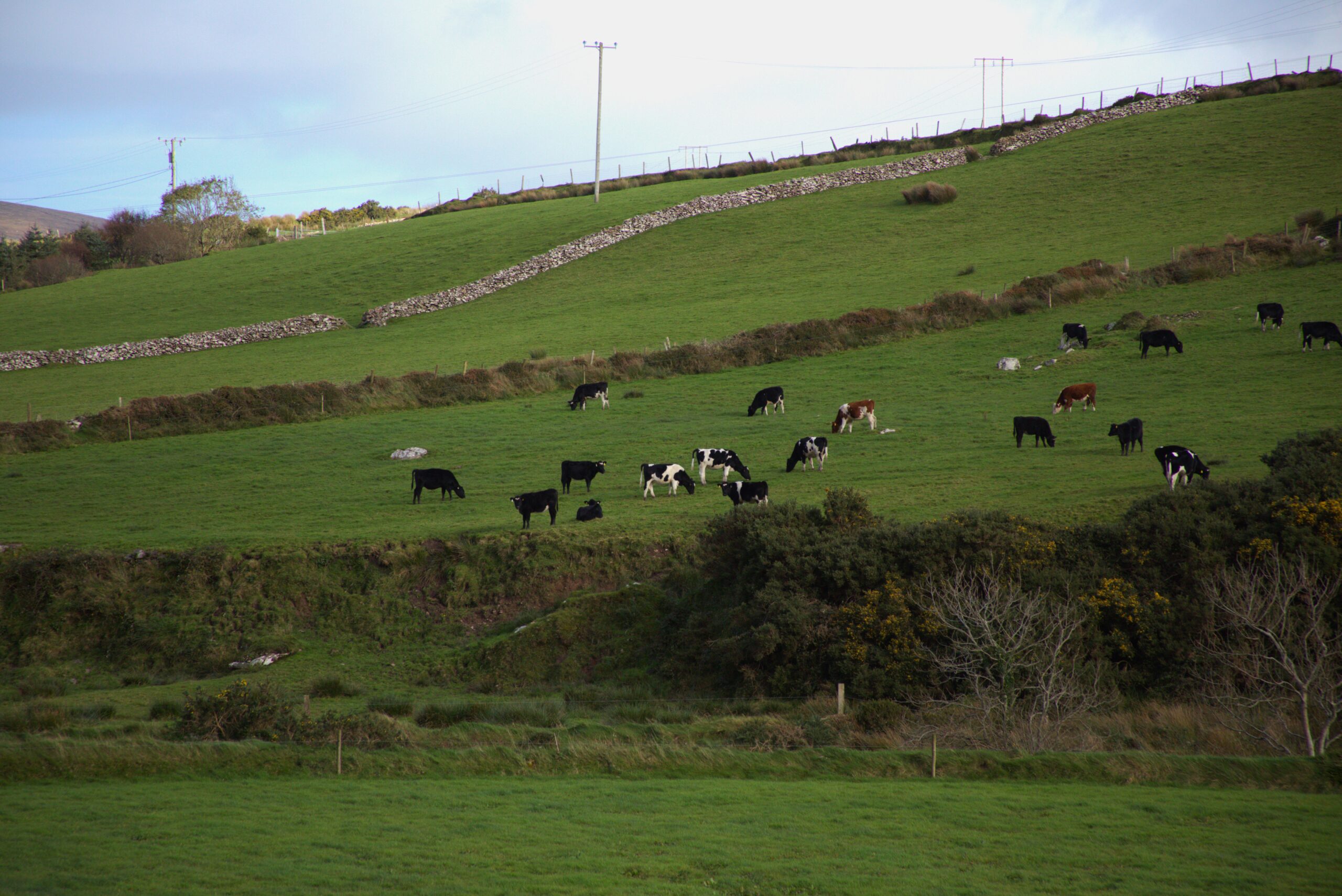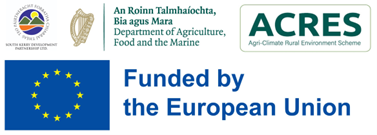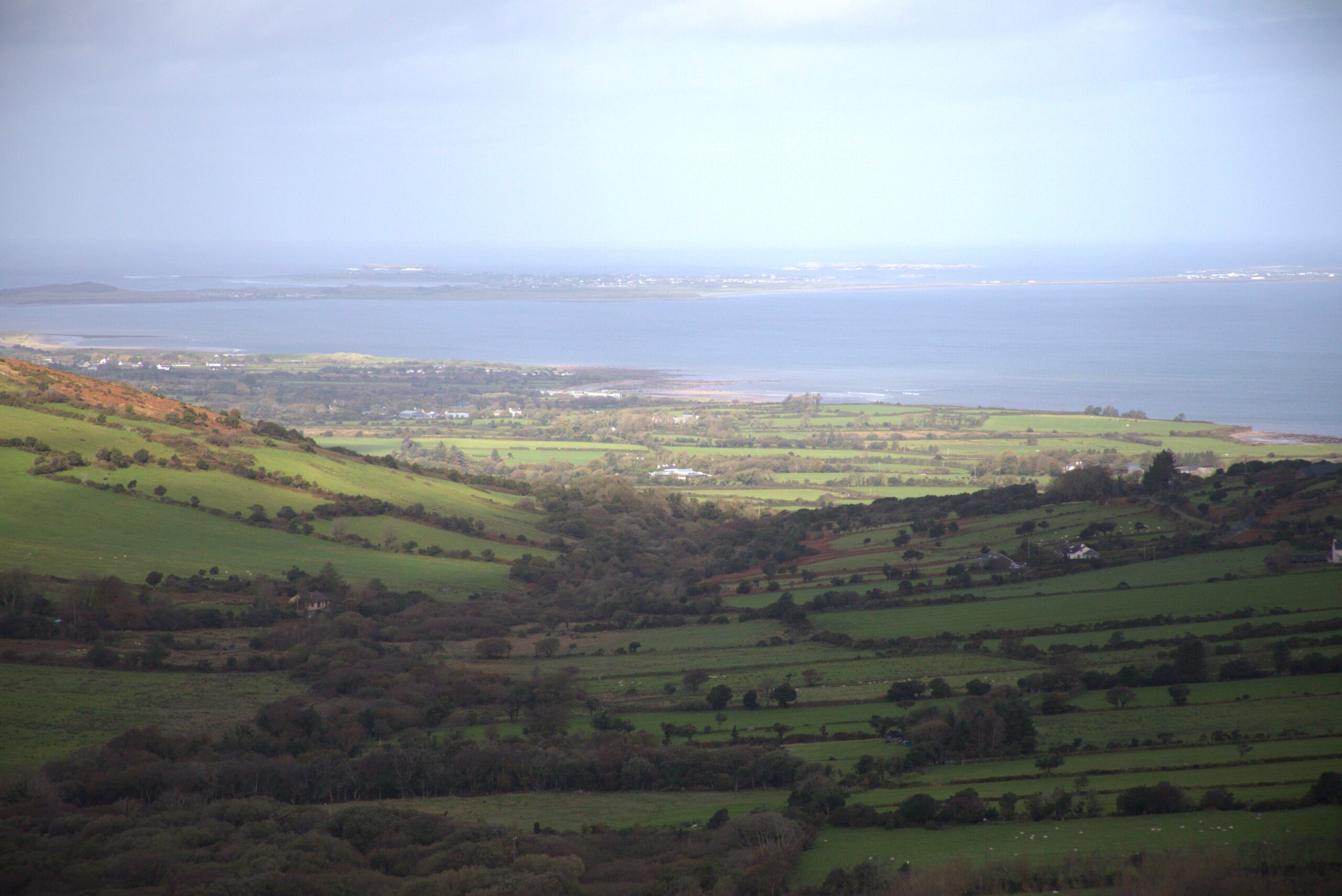
The Co-operation Project (CP)
There are three main elements of the ACRES Co-operation Project (CP): Results-Based Habitat Assessments, Non-Productive Investments (NPIs) and Landscape Actions (LAs). The results-based habitat assessments are very important to assess, at the field-scale, the environmental quality of farmland in the Kerry and West Cork Co-operation Zone. NPIs and LAs are funded actions which are available to support farmers in improving the condition of habitats on the farm, supporting the protection of rare and threatened forms of wildlife, protecting watercourses, or ensuring the land can continue to store carbon. When we speak about habitats, this basically refers to any patch of land where wildlife is known to live; some common examples of habitats in southwest Ireland include grasslands, bogs, woodland and sand dunes.
To help with the role out of the ACRES CP at the local level, farmers participating in the ACRES CP in the Kerry and West Cork Co-operation Zone will have the support of our local CP team who are spread between our Camp, Beaufort, Kenmare and Bantry offices.
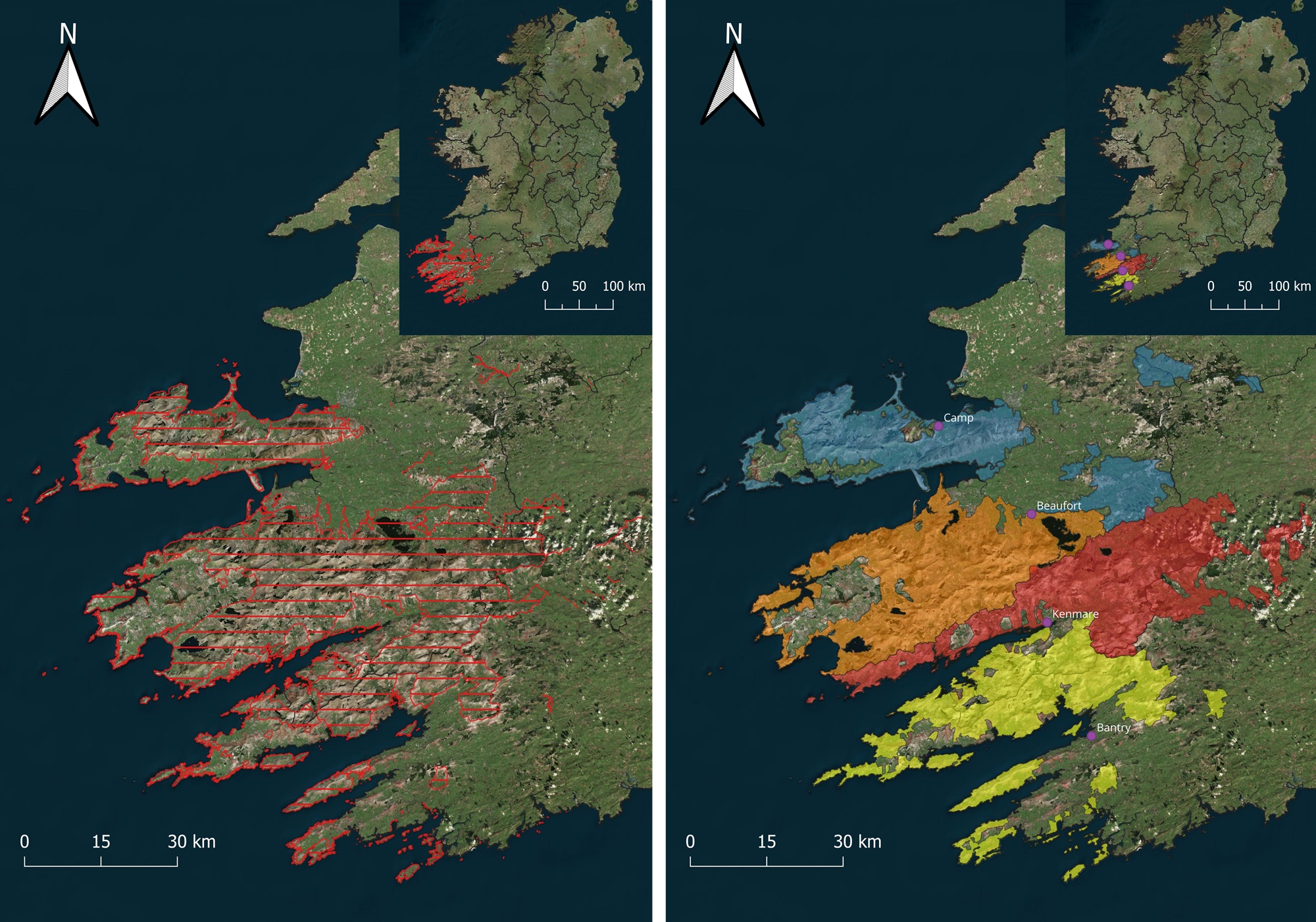 ACRES Kerry / West Cork Co-operation Zone (left) and Sub-Regions (right)
ACRES Kerry / West Cork Co-operation Zone (left) and Sub-Regions (right)
Results-Based Habitat Assessments
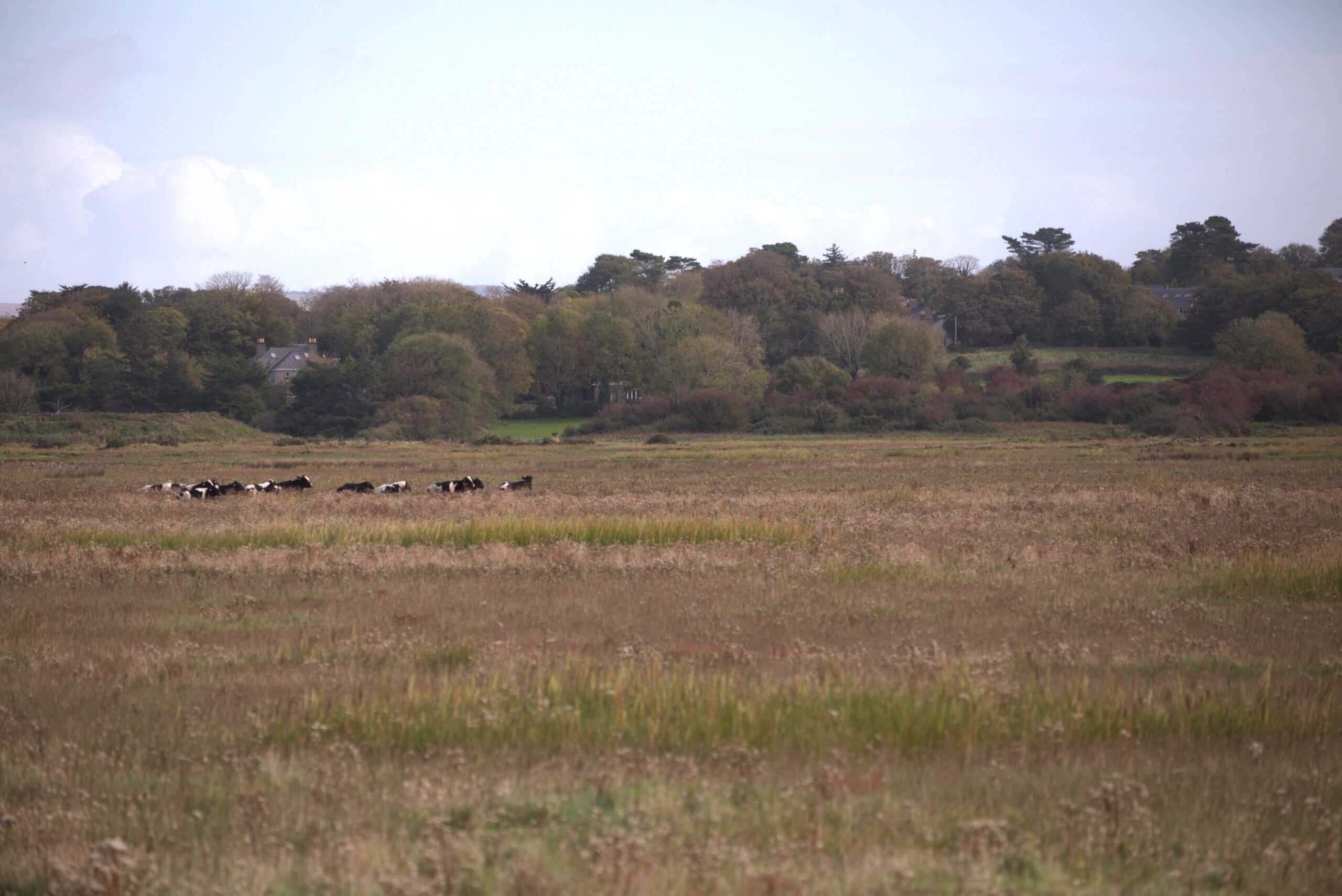
All farmers who participate in the ACRES CP will have their land ‘scored’ through a results-based habitat assessment. By using ‘scorecards’, farm advisors will assess the condition of a farmer’s private land in the CP Zone, whereas the CP team will assess the region’s commonages. In each parcel, these scorecards are designed to assess, among other things, the cover of certain plant species, the vegetation structure, and threats and pressures facing the site (such as burning, dumping, soil erosion, invasive species, or water pollution).
In the Kerry / West Cork Co-operation Zone, there are eight scorecards in use. These are:
- Grassland – Grasslands which are grazed or cut for hay or silage.
- Coastal Grassland – Sand dunes and saltmarshes are habitats with a distinct coastal influence.
- Chough – Sites of particular importance to the Red-billed Chough, usually with a coastal influence.
- Peatland – Bog or heath with wet soils and abundant mosses, lichens, liverworts and heathers.
- Woodland – Areas dominated by woody tree species, usually over 4m in height.
- Scrub – Areas dominated by low-growing trees, shrubs and brambles.
- Rough Grazing – Less intensively managed grasslands where scrub is often abundant.
- Breeding Wader – Wetter fields where well-balanced grazing is vital for breeding waders.
As the ACRES Kerry and West Cork Co-operation Project is funded by the Department of Agriculture, Food and the Marine, at no point will a farmer be charged for the services of the CP team, including for commonage assessments.
Non-Productive Investments (NPIs)
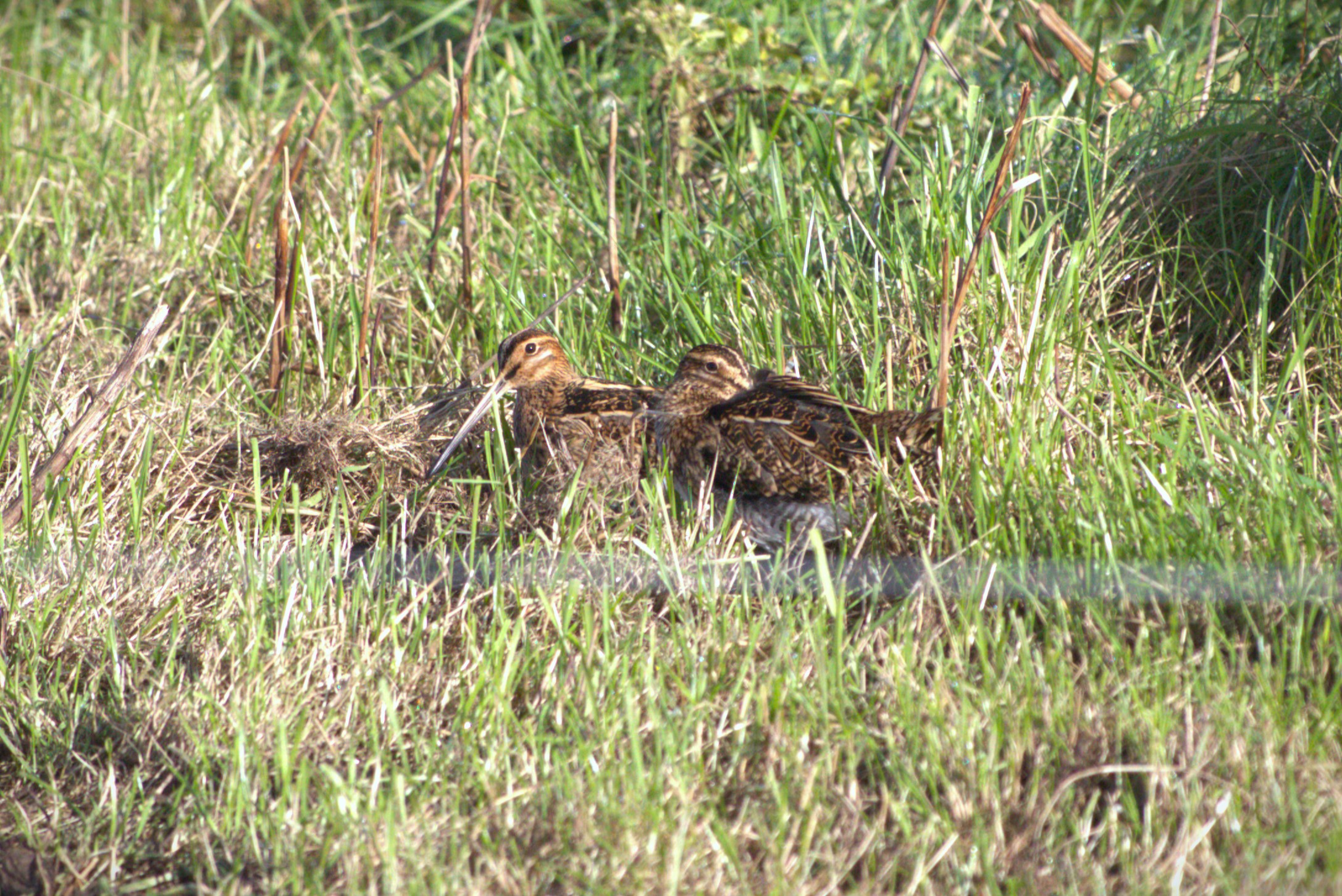
Non-Productive Investments (NPIs) can be thought of as small-scale ‘supporting actions’ that a farmer can take to address environmental issues on their farm. By implementing these actions, farmers can help to improve their field scores and receive higher payments over the duration of their contract. Many NPIs are targeted at improving the condition of habitats on the farm, or at directly supporting wildlife. For example, creating riparian margins can protect local watercourses, whereas controlling the spread of bracken into high quality grasslands can improve the quality of habitats on a farm. Similarly, hanging well-made nest boxes in appropriate locations can help to support our native birds and bats.
Farm advisors apply for NPIs on behalf of farmers to the Department of Agriculture, Food and the Marine. The NPIs are then checked by the CP team to verify that the proposed actions are suitable for the intended location and that no unintended side effects will come about from the actions. Although ACRES CP participants have a combined budget of €17,500 to undertake non-productive investments and landscape actions over the five-year contract, please note that no purchases may be made and no work may be carried out until you have received written approval from the Department of Agriculture, Food and the Marine telling you to go ahead with the action in the proposed location.
For a full-list of the NPIs available as part of ACRES CP and their associated payment rates, see the following specifications document.
Landscape Actions (LAs)
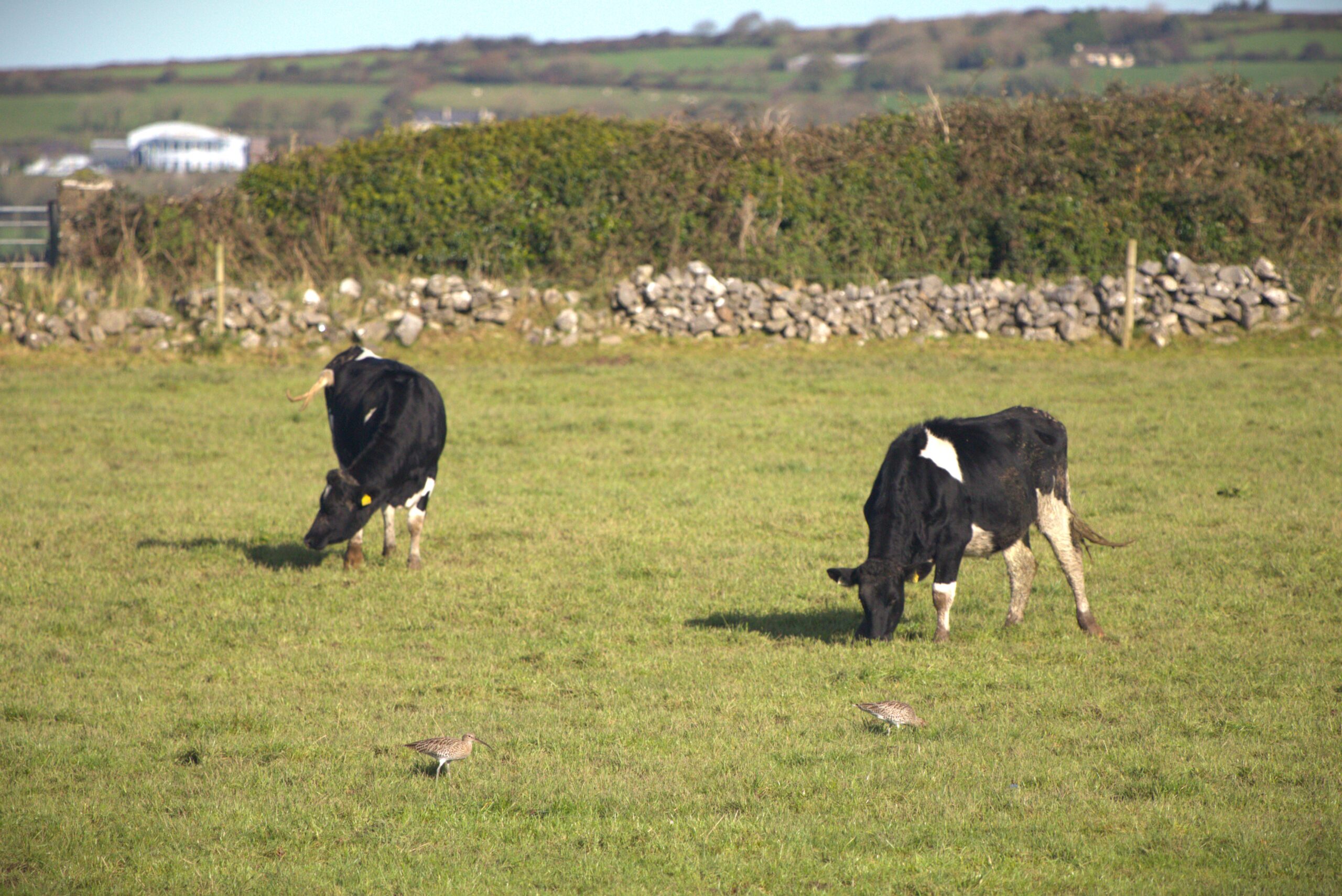
Landscape actions (LAs) differ from non-productive investments (NPIs) in that they are used to address problems that occur across the whole farm, or at even larger scales. Although, the final specifications for landscape actions are yet to be released, actions which will be most applicable to the Kerry and West Cork CP Zone are likely to include those relating to commonage governance, the control of invasive species, targeted grazing of Purple-moor Grass or Gorse, wildfire resilience, water quality improvements, peatland restoration, and the conservation of priority species (Freshwater Pearl Mussel or Lesser Horseshoe Bats, for example).
The CP team will develop landscape actions to address local environmental objectives. These actions will be promoted to farmers in relevant areas, and the CP team will be available to support farmers in planning these actions for their locality.
There are a couple of important points to remember when planning to undertake Non-Productive Investments and Landscape Actions:
- If you find it challenging to apply for NPIs and LAs early on in your ACRES contract, there is no need to panic. If you do not spend part of your budget on these supporting actions in any given year of your contract, that money is not lost. The remainder of your budget which has not yet been spent on NPIs or LAs will be carried forward to the next year.
- If you receive a low score on your farm and you do not receive the maximum payment of €7,000 from your results-based habitat assessment, the balance between what you did receive (e.g., €5,000) and the €7,000 limit is then added to the budget that you have available to spend on Non-Productive Investments and Landscape Actions (€2,000 in this instance).
How are results-based payments calculated?
The results-based payments are calculated on a field-by-field basis. The participant’s overall score is then calculated according to three criteria:
- How many hectares do you farm?
- What were your field scores during the habitat assessments?
- Are the fields privately-owned or held in commonage?
The payment rates for land parcels that are scored as part of the ACRES CP are detailed in tables 1 and 2 below.
Table 2: ACRES CP Results-Based Payments (Privately Owned Land)

Table 3: ACRES CP Results-Based Payments (Commonage)

*Note: On land held in commonage, there is a participation payment set at €50/ha on the first 20 hectares irrespective of the results-based score. The payment rates in the table above include this payment in the calculation.
